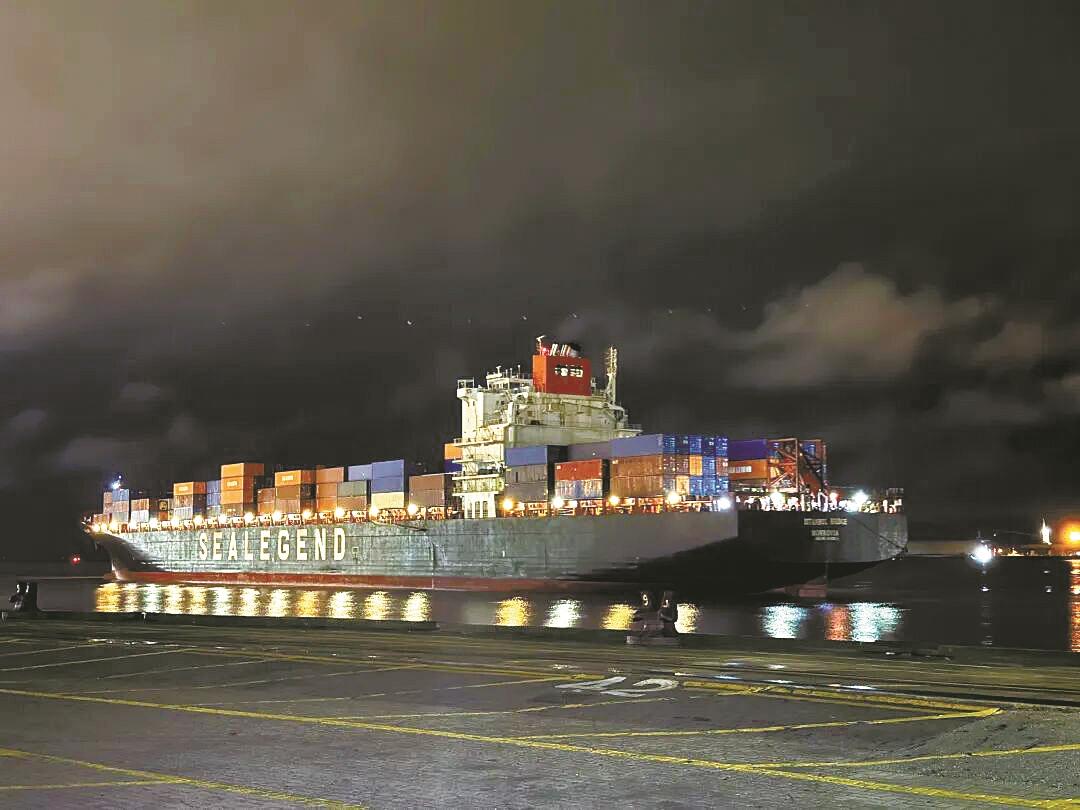By Jin Yuhan
After a 26-day voyage, the container vessel Istanbul Bridge arrived at the Port of Gdansk in Poland via the China-Europe Arctic container express route on October 19.
The new route marks the opening of a third route between China and Europe, complementing the century-old Suez Canal route and the China-Europe Railway Express. Departing from Ningbo Zhoushan Port in eastern China, the Istanbul Bridge will continue to ports in Netherlands after unloading part of its cargo in the UK,Germany, and Poland.
Dubbed the "Polar Silk Road," this Arctic passage signals that China's openness will continue to expand despite global uncertainties.
A Faster, Greener Route
The new China-Europe Arctic route offers a clear time advantage. The journey from Ningbo to the first call UK takes just 20 days, arriving in time to meet Europe's high-demand shopping season—compared with 40 days via traditional routes.
"Twenty days—half the time of traditional routes, and even a week faster than the China-Europe Railway Express," said Fang Yi, CEO of Sea Legend Line Limited. "This isn't just about speed—it's about reshaping the supply chain."
"Our company exports energy storage equipment—high-value and time-sensitive goods," said Zhou Chujing, logistics procurement manager at Sigenergy Technology Co., Ltd. "This route cuts our overall logistics costs by about 40% and helps us capture key market opportunities."
Beyond speed, the route contributes to greener shipping. The vessel runs on low-sulfur fuel, reducing carbon emissions by about 50% per voyage. Following its first call at Felixstowe, the Istanbul Bridge continues to major European ports including Hamburg, Gdansk, and Rotterdam.
By connecting the right ports with the right cargo and timing shipments to match demand, the Arctic route provides an efficient, customized logistics solution for Chinese goods headed to Europe.
A Backup Route for an Uncertain World
Global trade is facing mounting challenges, from geopolitical tensions and canal congestion to volatile freight rates. The China-Europe Arctic route underscores the strategic importance of diversifying shipping routes.
"Its value is not in replacing existing routes, but in supplementing them," said Zhang Handong, a researcher at the Department of Commerce of Zhejiang Province. "It functions as both a backup option in critical moments and a strategic alternative for China's foreign trade."
For businesses, the route offers the confidence that comes with having an alternative during disruptions. The route acts as a stabilizer in response to geopolitical shifts. When land routes face disruptions, the Arctic route provides an alternative. Navigating north, the Istanbul Bridge carved a new path, creating a direct and resilient corridor for Asia-Europe trade.
The Arctic route also adds a crucial layer of resilience to China's diversified logistics network. According to Sun Yanhong, director of the Department of European Economy at the Institute of European Studies under the Chinese Academy of Social Sciences, the new route offers greater flexibility compared with the congested and often volatile Straits of Malacca and the Suez Canal. As an alternative corridor for China-Europe shipping, it enhances the stability and security of global supply chains.
The Rise of the Polar Silk Road
"The China-Europe Arctic Express is more than a shipping route—it demonstrates China's commitment to high-standard openness," said Li Zhiyuan, professor at Fudan University's School of Economics.
The route represents a key step in turning the "Polar Silk Road" from vision into reality. In 2018, the white paper China's Arctic Policy emphasized the country's willingness to cooperate internationally to develop Arctic sea routes.
"This marks a major breakthrough for the Belt and Road Initiative in polar regions," said Sun Xuejun, chairman of Zhejiang Seaport Logistics Group.
Along the Arctic corridor, China is opening new shipping lanes while exporting green technologies, scientific expertise, and a spirit of openness. Materials developed by the Ningbo Institute of Materials Technology & Engineering, CAS, have been applied to the icebreaker Xuelong 2, equipping it with advanced capabilities for polar navigation.
"From the Pacific to the Arctic, from traditional canals to polar seas, China is playing an increasingly central role in global trade," said Xue Qunji, academician of the Chinese Academy of Engineering.
As Arctic navigation conditions improve and the route network expands, the "Polar Silk Road" is expected to see growing traffic. The arrival of the Istanbul Bridge is just the beginning.



